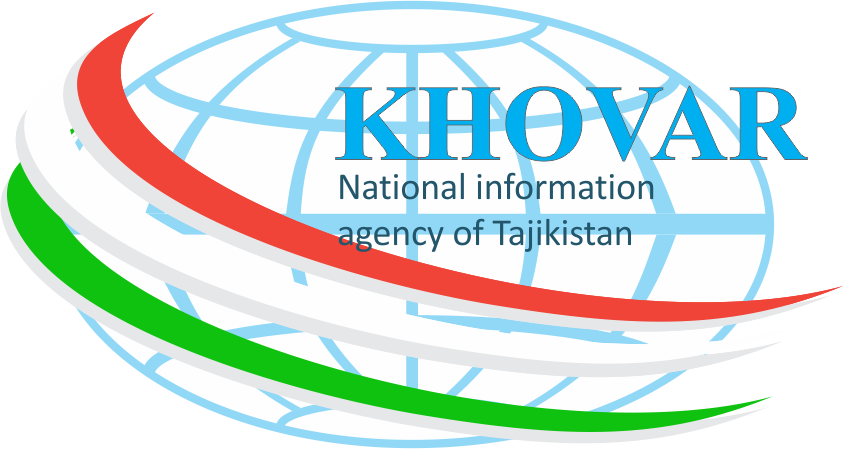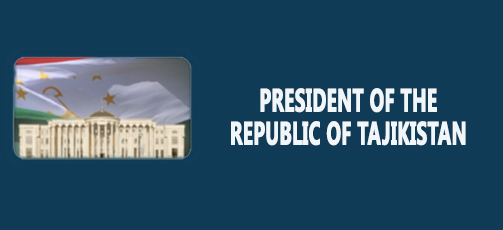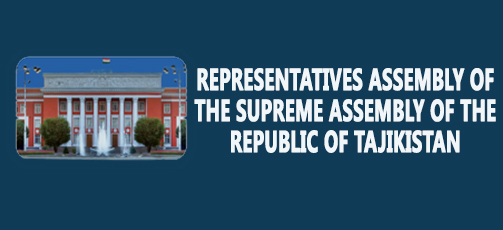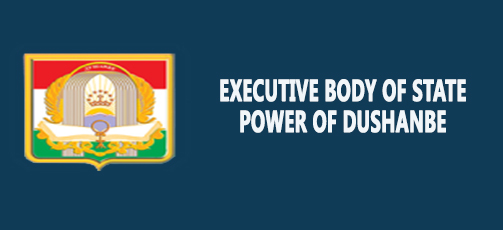INDISPUTABLE TRUTH. Vorukh Is the Heritage of Arya and Part of the Historical Territory of Tajikistan
Read also

DUSHANBE, 30.03.2021 (NIAT Khovar) – Kyrgyz media claims that historically the village of Vorukh had served as the border of the country, and therefore their claim to it is just and correct. Famous Tajik poet, researcher, philologist, Dr. Nurali Nurzoda contests such claims by citing numerous sources, from ancient to current. Below is his latest essay on the subject.
The emergence of another controversy around Vorukh is the issue of the enclave, particularly the proposal to appropriate it, which underlines the fact that, unfortunately, the Kyrgyz side customarily ignores the truth with a thousand-year history written on the pages of great books authored and recognized by great historians, scientists, and travelers. Recent disputes about the village of Vorukh once again prompts us to supplement a previously published article based on the works of foreign scientists, who confirm the historical truth that Vorukh is indeed historically one of the ancient lands of Tajikistan.
The Kyrgyz side lays claim to these lands without any grounds. If they do use arguments, they base them on the artificial delimitation of borders which took place in 1924. It is known that at that time, during the territorial distribution in Central Asia, the Soviet government questioned the existence of the Tajik people.
The famous scientist and historian Vasily Bartold wrote about the Tajiks in his research work “When the Constitution of Turkestan Was Approved in 1920, the Kyrgyz, Uzbeks and Turkmens Were Recognized as Indigenous Tribes of the Region, and the Tajiks Were Completely Forgotten.”
An appeal to ancient historical sources proves that this region served as a residence of the Tajik people, and even the great sons of the Tajik nation who originally came from these places and played an important role in the spread of the Tajik language and culture in India and other countries, can justify their arguments.
Moreover, if we consider the lexical structure of the name of the city of Batken, we can understand that this name comes from the Sogdian term Bodkand, meaning the city of wind. Of course, the only heirs of the Sogdian language and culture on the territory of Farorud are the Tajiks, who have every right to own this heritage. Another noteworthy point is that Batken used to be part of the Osh region. One of the most ancient geographical works of the Samanid era Hudud ul-olam is about the city of Osh, which indicates that this is a Tajik city: “Osh is a prosperous, blessed place with a warlike people located at the foot of the mountains. And there is a guard on this mountain, and he keeps the unfaithful Turks.”
Hundreds of Tajik names on the territory of these districts and other regions still exist, which proves their historical connection with the Tajik territory. Kutbiddin Bakhtiyori Kokii Oshi, one of the most famous Tajik sages and poets, is originally from this city, and for many years played a significant role in the propagation of the Tajik language, literature, and science in India. Several manuscripts, lithographs, and a collection of Tajik poems authored by him are now kept in the libraries of India and Pakistan.
Let us return to the claim by the Kyrgyz media. Kyrgyz print and electronic media now report that Vorukh is an enclave and was once considered the country’s border. Not only is this an unfounded statement, but it is a direct distortion of history, since there are hundreds of historical facts that indicate that even in ancient times Vorukh was a large province inhabited by Tajiks, under the same jurisdiction as Sukh, Hushyori, etc. Linguistically, Vorukh is one of the oldest Sogdian terms, and the inhabitants of this region still use the oldest Tajik words of the Samanid era, i.e., the first Tajik state.
Numerous facts refute their claim. The word Vorukh comes from the ancient Persian word vara, which means fortress, a place surrounded by a wall. According to Avestologists, the words Voruba Rashti and Voruja Rashti are associated with Vorukh. Avesta makes mention of seven divine countries which during the flood served as a haven for mankind. These two northern countries were known under the names Voruba Rashti and Voruja Rashti, and during the time of Faridun the names of these two countries turned into Sarazm. The word thief in present-day Panjikent, Vorukh in Isfara region, and Rumoni in Bobojon Gafurov region in Avesta is known under Indo-European names. Meanwhile, in the town of Guri mug Vorukh, a small plaster statue of a woman was excavated which is believed to be a statue of one of the saviors of mankind, the angel of the water paradise, the keeper of the heavenly waters Aredvisur Anahito. Such names prove that Zoroastrianism once flourished in Vorukh, and that the name Vorukh likely originated from this period.
Also, sources emphasize that during the Samanid period Vorukh was subordinate to this Tajik national state. Even Zahiruddin Muhammad Bobur in his book Boburnoma states that “Vorukh is located on a hill with running water and clean gardens. There are many fruit trees, but most of the orchards are almond trees, and the population is composed of Sarts and Persian speaking people. Isfara region consists of four foothills, one of them is Isfara, the second is Vorukh, the third is Sukh, and the fourth is Hushyor.”
Hundreds of similar articles and historical sources indicate that Vorukh was Tajik land. The dispute is about the word Sart, and who it referred to. Zahiruddin Muhammad Bobur himself uses the same word in the same book Boburnoma in relation to the inhabitants of Marginon, contrasting them with the inhabitants of Andijan, whose language was originally Turkic, emphasizing that the term Sart refers to the Farsi-speaking people. The founder of Uzbek literature Amir Alisher Navoi emphasized that there are people called Sart, meaning Persian-speaking and Tajik, differentiating them from other people and tribes in Central Asia.
Academician Bartold gave a detailed scientific assessment of this issue based on the ancient historical heritage: “The writers of the 15th and early 16th centuries, including Navoi and Bobur used the word Sart to mean Persian, Tajik, to differentiate them from Turks. The word Kazakh referred to vagabonds and robbers, which is found in the works authored by the above-mentioned writers. The modern Kyrgyz, or, as he calls himself, the Kazakh, at that time was still just being formed and had almost no relations with the population of those areas from which Bobur and Navoi emerged. Information about various uses of the word Sart and about various explanations of this term has been collected with sufficient completeness by N. Ostroumov. However, there is still no scientific explanation, in our opinion. Most important of all is the fact that the word Sart is not found in the writings of the pre-Mongol period, and that it was first used by the Mongols. According to Rashid ad-din, the Mongols used the word Sartakty to also refer to Tajiks. According to him, they first applied this word to Arslan Khan of Karluk, the first Muslim ruler who had to face Genghis Khan. From this we can conclude that the Mongols called all Muslims without distinction by this name, especially since the Karluks were undoubtedly not Aryan, but a Turkic people. So, the explanation of the word Sart is probably to be found in the Mongolian language. Without knowing this language, we cannot offer our own explanation, except that in the language of the Mongols there was a corresponding root, which is already evident from the name of the second Golden Horde Khan, Sartak. During Genghis Khan’s campaigns, the Turks tried to get closer to the Mongols, in contrast to the urban population, which at that time was Aryan in origin and language. It is very likely that because of this rapprochement, Mongols ceased to call all Muslims Sarts, and began to use this word only in relation to the Aryans who had retained their isolation, and that this term was passed on from the Mongols to the Turks.”
In his book Travel to Central Asia historian and traveler Arminiy Vamberi writes about the Khorezm Sarts. He notes that “Sarts, called Tajiks in Bukhara and Kokand, are the ancient Persian population of Khorezm, their numbers here are relatively small. Gradually they have mixed their native Persian with Turkic.” It is interesting that whenever he uses the word Sart, in parentheses he emphasizes that it means to be of Persian origin, that is, Tajiks. At the same time, speaking about ethnic groups living in the region, he always portrays the Kyrgyz as a separate people from the Sarts, lacking ethnic ties.
Based on the completed research, it is clear that the term Sart refers to people of Aryan origin living and trading in Central Asia. In other words, in ancient sources this word is used mainly in relation to the Tajiks. Consequently, the historical truth cannot be crossed out by unfounded statements. This issue should be considered not from the point of view of maps of the Soviet era or groundless statements of interest groups, but from the point of view of materials from ancient historical sources, the language of the people, and geographical names, because every word must be weighed. Otherwise, nothing but shame can result from words lacking proof.
Ethnographic and archaeological research, especially the work under the leadership of Academician Litvinsky, provided world scientists with historical evidence indicating that in the past the main inhabitants of this region were Tajiks, and even a student of this great scientist Pevzner, studying the inscription of Southern Vorukh, noted that this is the oldest example of the written heritage of the Tajiks, written in the Tajik language. In this case, he used the exact term Tajik, not Persian. “Apparently, most of the inscription is written in Tajik, except for a few lines, where one can assume the Arabic language. If this assumption about the language is correct, then the southern Vorukh inscription is the most ancient monument in the Tajik language.”
The existence of thousands of such documents, which point to the history of the Tajik people, provide us with the opportunity to discover the truth of history. Referring to these historical documents contained in the most valuable historical and literary sources, we never pretend to nationalism. On the contrary, referring to these articles, we state that these historical truths have never been erased from human memory, as historical evidence is always with us.
However, the Tajik people, like their great sons who found themselves outside the so-called borders of modern Kyrgyzstan, as representatives of the Tajik nation, opened the way to the world only through culture, literature, and education, and not these groundless claims, which have no more than a century of history. While discussing this issue, we base our assertions on the fact that foreign scientists, including Russian orientalists, relied on historical sources, and undoubtedly there are many other articles in the historical heritage dedicated to Vorukh as the sacred land of Tajikistan.











 Tajikistan to host Chinese Culture Days
Tajikistan to host Chinese Culture Days National Museum of Tajikistan to Exhibit Artifacts at International Exhibition in China
National Museum of Tajikistan to Exhibit Artifacts at International Exhibition in China Filmmakers from 20 Countries to Participate in the International “Toji Somon” Film Festival
Filmmakers from 20 Countries to Participate in the International “Toji Somon” Film Festival Opening Ceremony of the Days of Mongolian Culture Held in Tajikistan
Opening Ceremony of the Days of Mongolian Culture Held in Tajikistan President of Mongolia Ukhnaagiin Khurelsukh Explores the History of the Tajik People at the National Museum of Tajikistan
President of Mongolia Ukhnaagiin Khurelsukh Explores the History of the Tajik People at the National Museum of Tajikistan Mongolian Culture Days to Take Place in Tajikistan
Mongolian Culture Days to Take Place in Tajikistan Ten New Historical and Cultural Sites Discovered in Tajikistan
Ten New Historical and Cultural Sites Discovered in Tajikistan Six Tajik Documentaries to Be Broadcast on Chinese Television
Six Tajik Documentaries to Be Broadcast on Chinese Television Tajikistan Submits Five New Nominations for Inclusion in the UNESCO World Heritage List
Tajikistan Submits Five New Nominations for Inclusion in the UNESCO World Heritage List Tajik Gymnasts Win 15 Medals at International Rhythmic Gymnastics Competition
Tajik Gymnasts Win 15 Medals at International Rhythmic Gymnastics Competition Tajikistan’s Contribution to Cultural Heritage Preservation in the Era of Globalization Presented in Kazakhstan
Tajikistan’s Contribution to Cultural Heritage Preservation in the Era of Globalization Presented in Kazakhstan














